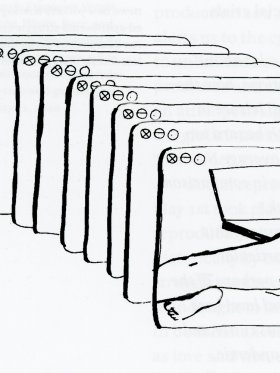The issue of the necessity and timeliness of painting is key to the work of Stefan Kürten. His painting looks at reflection and renewal, making the invisible visible. It concerns itself with the ‘reason for being’ of the images, as well as a sense of doubt in relation to them. In his figurative collaged motifs, which draw upon photography and other media, the associated enhancements provided by the archival element – whether conscious or unconscious – play a decisive role. The cultural memory that stems from this sphere and feeds into how we picture things often lies at the root of his captivating imagery.
For many years, Stefan Kürten has dedicated his work to the complex theme of people’s private lives: suburban bungalows and their gardens, with carefully tended paths, lavishly planted flower beds and neatly proportioned swimming pools; imposing brick mansions in idyllic surroundings; and unassuming blocks of flats lining the bland roads leading into our cities. The themes of his pictures reveal an architectural history that is also our own modern history.
The need for protection against the dangers of nature has shaped the history of mankind since time immemorial. Long before people stopped wandering in order to find a place to settle, they looked for opportunities to protect themselves. When they began to put down roots and erect permanent dwellings, there was an even greater need to shape this space in a conscious fashion. From very early on, the significance of one’s own private house went well beyond its basic function as a ‘bunk hole’. Given the emotional import attached to having a private place of retreat as a home, it is no wonder that places to live appear to morph, almost of their own accord, into vessels for protecting one’s personal dreams and ideas of happiness.
The fact that the reverse of this is also possible, however, with homes becoming repositories for feelings of loneliness, anxiety and depression, not to mention grisly houses of horror or murder scenes – is all rather commonplace amid the state of fury that so often defines mankind and its history. The cosy, safe home thus becomes inverted into a traumatic experience of psychic isolation, a prison sentence with a sometimes brutal ending.
[...]
*Translated by Maisie Fitzpatrick / Kennistranslations
![Stefan Kürten, Pink Turns to Blue [Rosa transforma-se em azul], 2019 Acrílico e tinta-da-china sobre papel em tela 121×167cm](/sites/fedpelectra/files/2021-01/Screenshot%202021-01-31%20at%2002.51.35_0.png)





Share article